
views
Starting to Save Money
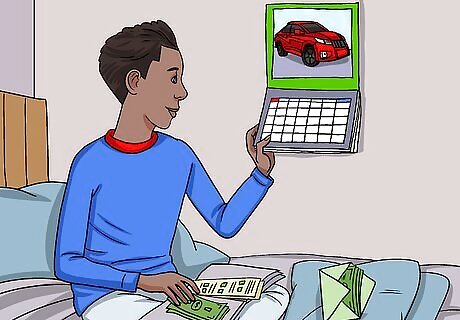
Start early. It’s never too early to start saving money. If you think you might want to buy your own car, start putting aside birthday money and earnings from summer jobs. The earlier you start, the more you can potentially save by the time you are old enough to drive. Consider the age at which you can get a driver’s license. There’s no sense in purchasing a car before you can legally drive it, so establish your timeline based on when you can actually drive the car you buy.
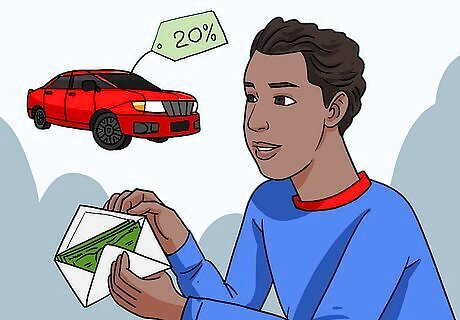
Set a savings goal. Come up with a number that will cover your car purchase, along with tax, licensing, registration and transfer fees (if applicable). Think about how realistic this number is. You may want to save $30,000 so you can buy a brand new car. But if you give yourself a year to make that money, you will likely not meet that goal. At the bare minimum, your savings goal should equal an appropriate down payment amount. Typically, this is 20% of the total cost of the car. If you are planning to take out a loan to buy your car, have at least 20% of the total price ready to pay in cash as a down payment. You will also need a co-signer on a loan; your parent or guardian will need to guarantee the loan.

Account for your other expenses. If you are responsible for paying for leisure activities, new clothes, and so on, consider how much money you need or want to spend on these things every month. Factor these expenses into your overall savings plan, subtracting them from the total possible amount you can save.
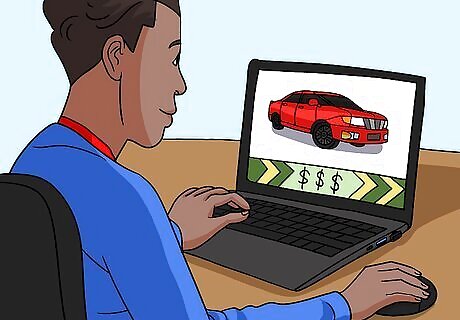
Consider the price of the car. As you start saving for a car, you should consider the price of the car that you want. If you want to buy a brand new car, a sports car or a high-end model, you will have to save considerably more money than a more practical, inexpensive or used car. The price of a car doesn’t end when you purchase the car. Take into consideration other factors like car insurance, reliability and gas mileage, which will add to the ongoing maintenance price of the car.
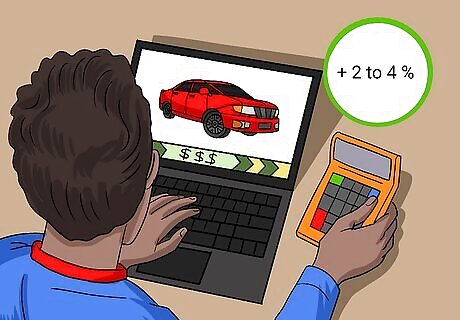
Add in inflation. As you are looking to set your savings goal, remember that you are looking to buy a car in 2-3 years, not right away. Think about how prices may go up due to inflation. Add about 2% to 4% more to the total savings goal that you establish.

Determine a savings schedule. Calculate how much money you will need to make in order to save your goal in the amount of time you are giving yourself. For example, if you want to save $6,000 in 2 years, you need to save approximately $250 every month, or about $60 per week. Make a schedule for often you will put money away. Will it be every week or every month? Do you plan to save birthday or holiday money?
Earning Money

Get a job. There are a number of job opportunities for teens, especially in the summer and around the holidays. These do, however, tend to be minimum wage jobs, but having some level of income is preferable to no income. Compare different types of jobs to see if there are certain jobs that will pay more. Babysitting, for example, can potentially pay more than a minimum wage job, although the hours for babysitting may be more sporadic.

Do extra chores around the house. Strike a deal with your parents to regularly do chores that are beyond your usual chores in exchange for payment. This could include house painting, yard work, babysitting younger siblings, cleaning and detailing the family car, and so on.

Offer to do work for your neighbors. Offer to do odd jobs around the house or yard for neighbor, especially more elderly neighbors or neighbors with young kid. Put up flyers around the neighborhood that advertise your skills. Dog walking, yard work, and babysitting can be good jobs that neighbors often need help with.

Hold a yard sale. Selling some of your possessions can generate some cash for your savings account. Check with family members to see if they have any items to add to the sale; see if they will split the proceeds with you on their items if you handle the entire sale. Put up advertising around the neighborhood in order to increase traffic to your sale.

Sell some of your possessions to resale stores. Sell books at a used book store or gently used clothes at a consignment shop. There are also a number of online resale websites, such as Tradesy.com or Copious.com.

Put loose change in a money jar. Get an empty jar and keep it in your bedroom. Every time you find spare change in your pockets, inside the sofa, or even on the ground, put the change in the jar. When it's full, deposit it into your savings account.
Opening a Bank Account

Visit a local bank. Talk with a banker about account options for teens. They may have special accounts for you. You can choose a bank that your parents use, or you can choose a different bank. Credit unions are a good option, as they tend to have fewer fees than regular banks.

Choose a savings or checking account. A savings account is primarily for depositing money, rather than withdrawing. While you can withdraw money from a savings account, it can often be more restrictive. There are no checks, and debit cards are not always tied to savings accounts. Also, some banks may limit the number of withdrawals per month that someone can do. A checking account can be more convenient if you need ready access to your money. This can, however, make it more tempting to spend your money instead of saving it.

Check for fees and requirements associated with the account. Some accounts have monthly fees or maintenance fees attached. They can also have overdraft fees of $30-$50 if you overdraw your account. These can be costly and add up quickly. Also check for other account requirements, such as minimum balances.

Open an account. You will probably need to open your account with your parent or guardian, who will typically have full access to your account. Bring current photo identification, such as a student ID card or a passport, as well as your social security card. Your parent or guardian will likely need to bring two forms of photo ID. Check with your bank to determine the exact requirements for opening an account.

Deposit a starting amount of money. You may need a minimum balance in your bank account. At any rate, deposit some amount of money into the account so that you can start to watch the balance grow right away.
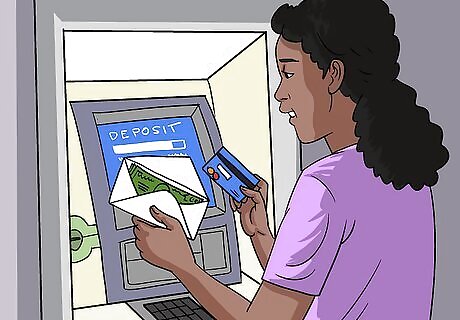
Continue to make regular deposits. Stick to your savings schedule and take money to the bank for regular deposits. You can either deposit the money inside the bank with a teller, or you can make a deposit at an ATM. Record deposits, along with any withdrawals (account fees, your own spending, etc.) in a register to track your balance. Compare with your bank statement every month. You can also track online through internet banking.
Changing Your Spending Habits

Consider what’s most important. Don’t bow to peer pressure by feeling that you need to buy the latest fashions or newest gadgets. Think about whether the instant gratification that some of these items will give you are worth the dent in your savings account. This will also help you start to rethink your relationship with material goods.

Choose less expensive alternatives. If you want to buy some music, download 1-2 songs, rather than the entire album. For other items, do some price comparisons between stores, or between stores and online prices. You might find that you can save money by shopping around.

Buy used items or items on sale. If you need to use your spending money to buy clothes, books, and so on, buy used items rather than brand new items. Alternately, wait for sales to buy things that you really want, such as around holidays or at the end of the season.

Refrain from buying on impulse. If you want to buy something, wait a week before buying it. This will give you time to reconsider if you really need the item. Chances are you’ll find that you’d rather keep the money for your car.


















Comments
0 comment